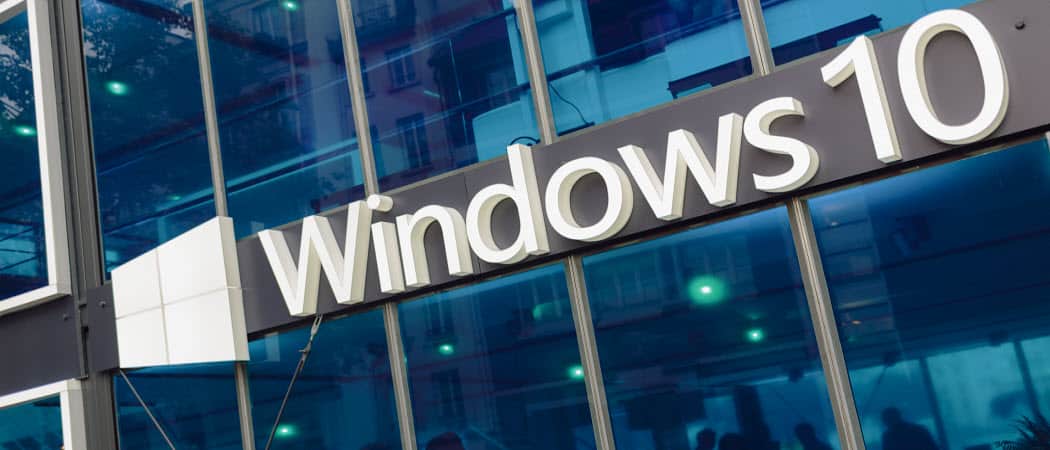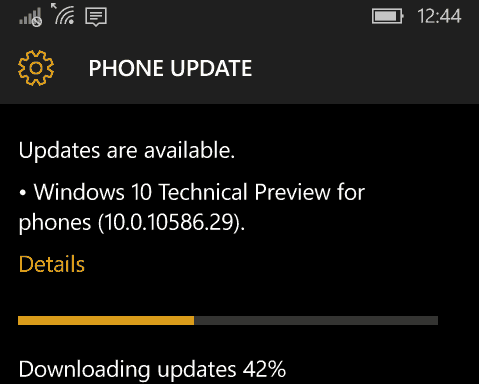Windows 10 Redstone
In our Understanding Windows 10 Editions, Architectures and Builds article, we discussed how versioning is now handled under Windows 10. The kernel version made a significant jump from Windows 8.1’s version 6.3 to 10, but the build numbers increased rapidly. Most recently, with the November Update, Microsoft changed to a build slicing methodology for how it has incremented the build number. If you check the Windows 10 About Dialog in the latest update, it is now described as OS version (1511) 10586.29. The number after the decimal point reflects the amount of revisions of Windows 10 that have been produced since build 10586 was released in early November. Instead of incrementing the build number, this method was used instead.
Moving beyond the numbers not much is known about ‘Redstone’ but rumors so far have indicated tighter integration with Cortana and the possibility of making it more pervasive in the operating system with a floating widget that you can call up, on command. Integration with Office is another speculated promise of the update. Users will likely see a preview of the planned extensions feature in the new Microsoft Edge browser. With Windows 10 Mobile seeing close integration with the desktop version for the first time in regards to the build numbers, it is expected that Redstone Mobile will likely see greater improvements with its update mechanism and continuum technology that makes it easy to convert a Windows Phone into a desktop computer. The .29 update for Windows 10 Mobile saw its first carrier-independent release, something that has so far been elusive on Windows Phone and Android.
As for when Redstone will launch officially, rumors speculates the first anniversary of Windows 10 which would be around late July 2016. According to sources close to the company, Windows Insiders might be able to start testing Redstone as early as this month. Windows 10 is estimated to be running on over 200 million systems worldwide. The mobile version recently launched on the company’s new flagship Lumia devices, the 950 and 950 XL. Businesses are expected to accelerate their deployments of the operating system in 2016; Microsoft recently enabled the ability for volume license clients to now be able to upgrade to Windows 10 using Windows Update. Windows 10 continues to be available as a free upgrade to existing Windows 7 and Windows 8.1 users until the end of July 2016. The update impacted network settings and third-party programs. In my case…. • Turned on password protected sharing, which I’d turned off • Removed Lavasoft’s Ad-Aware • Removed settings for SpyHunter • Disabled access to a shared network printer • Disabled Spyder color calibration on my main monitor • Reinstated Windows’ goofy sprocket hole frames around video thumbnails • Some apps now open Microsoft Edge by default even though I’m exclusively a Chrome user Since the upgrade, Event Viewer now shows 23 errors which weren’t there before, Many of the issues are permissions settings, denying access to Windows Image Acquisition Service (a USB scanner in my case), Microsoft Passport Container, Storage Service, RuntimeBroker and others even though I’m the administrator and sole user of the network comprised of my desktop and laptop (which has yet to be notified of the upgrade). Looks like I’ll be spending some time digging through regedit to give myself a bunch of permissions. Ugh. Windows update history has been wiped clean since the upgrade, but it does seem possible to uninstall what Windows refers to as “the latest preview build.” Also, I stepped away to eat lunch and came back to find Windows engaged in a time consuming update. People have work to do and don’t want their days disrupted this way. Keep jerking me around and maybe I’ll revert to Windows 7, or who knows, install Apple OS. Comment Name * Email *
Δ Save my name and email and send me emails as new comments are made to this post.
![]()




